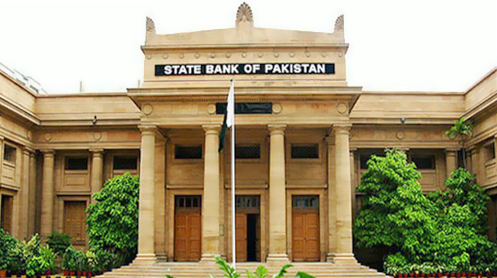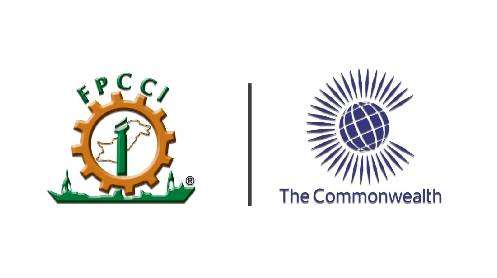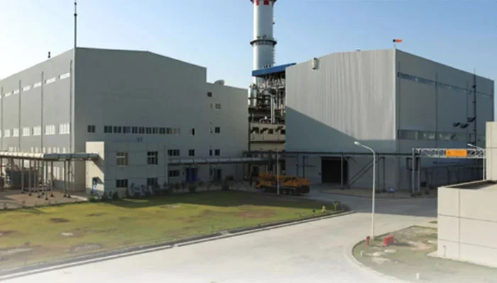The central bank has forecast Pakistan’s real GDP growth to fall in the range of 2-3 per cent in the current fiscal year, it said in its annual economic report released on Monday.
In June, the previous government approved an estimated 3.5pc GDP growth target for its 2023-24 financial year budget.
However, in its report, the State Bank of Pakistan (SBP) said the target would fall short as the impact of various demand compression measures introduced in the past two years might temper the pace of recovery in economic activity.
It stated that after a year of turbulence, the economic situation began to show some “early signs of improvement”.
The $3 billion Standby Arrangement (SBA) with the International Monetary Fund (IMF) in July had helped in alleviating immediate economic risks “to some extent” while the subsequent release of $1.2bn in funds, along with $3bn in bilateral inflows, helped to reverse the declining trend in the central bank’s foreign exchange reserves, the SBP stated.
“Furthermore, according to the July 2023 World Economic Outlook, the prospects for global economic growth in 2023 have somewhat improved, compared to earlier projections.
“Similarly, the non-energy global commodity prices have also eased compared to last year. These trends may have positive implications for Pakistan’s economy,” the report highlighted.
It explained that the withdrawal of guidance on import prioritisation from the end of June, along with the gradual easing in the foreign exchange position, was expected to “somewhat ameliorate supply chain situation and lift growth in large-scale manufacturing, as well as exports”.
“Moreover, an expected rebound in cotton and rice production will support agriculture growth in FY24,” the report said, adding that the government’s measures to encourage cotton production were already helping in securing an increase in the cotton sowing area and were also likely to encourage farmers to scale up crop management practices.
“Similarly, favourable weather conditions and a steep increase in domestic rice prices incentivised growers to expand area under rice crop and hence production in the ongoing year.
“The expansion in commodity-producing sectors is expected to have a knock-on impact on services in FY24,” the report reads.
Inflation
On the inflationary outlook, the SBP report said the lagged impact of monetary tightening, and other contractionary measures, was expected to keep domestic demand in check while the prospects of improvement in the supply situation, on account of the likely increase in production of important crops and resumption of imports, was expected to further moderate inflationary pressures in the current financial year.
“In addition to the improvement in domestic supplies, a high base from last year and sluggish trend in non-energy global commodity prices are expected to help bring down inflation in the range of 20-22pc in FY24.
“However, unforeseen climate events, adverse movements in global commodity prices, especially oil, and external account pressures are some important upside risks to this outlook,” the report said.
Deficits
Meanwhile, the report estimated that the fiscal deficit would be in the range of 7-8pc for FY24, explaining that higher interest payments might continue to prevent a notable reduction in spending while non-interest expenditure was expected to remain contained on account of lower subsidies and grants.
“A tepid recovery in economic activity is likely to shore up revenue collection during FY24. In FY24, the government has envisaged to boost revenues by increasing petroleum development levy to Rs60/litre, and announcing higher rates on top income tax brackets, builders, developers and property, and introducing additional GST on unregistered businesses.”
On the other hand, the current account deficit was forecast to fall in the range of 0.5-1.5pc in the current fiscal year.
The report said the outlook for the external account had improved at the start of the financial year, adding that the finalisation of the IMF SBA was “instrumental in reviving confidence” of multilateral and bilateral creditors, as well as international investors, and led to sizeable foreign inflows during the first two months of FY24.
“On the other hand, slightly improved global and domestic growth prospects are expected to bolster foreign exchange earnings from exports of goods and services. Although import volumes are likely to increase, lower commodity prices may prevent a significant expansion in imports bill during FY24. Workers’ remittances in FY24, however, are expected to remain slightly lower compared to the last year’s level,” the report reads.
Reform recommendations
The report underscored the need to initiate broad-ranging reforms to ensure the availability of resources for economic growth and development and also stressed expediting tax policy reforms and speedy implementation of governance reforms in public sector enterprises, terming them instrumental to creating fiscal space for public investment in human and physical capital.
The SBP also underscored the need to create a conducive environment to support foreign direct investment in exportable sectors and encourage technology transfers, coupled with agriculture sector reforms that were required to alleviate import reliance and achieve price stability.
There is a need to expedite these reforms to achieve the high and sustainable economic growth required to absorb the new entrants in the labour market, improve social welfare and raise the general standard of living in the country, the SBP suggested.
Review of FY23 performance
According to the report, Pakistan’s economy faced multiple challenges during FY23, as longstanding structural weaknesses exacerbated the impact of successive domestic and global supply shocks of unprecedented nature.
The country’s macroeconomic situation had already begun to deteriorate since the second half of FY22 in the aftermath of the Russia-Ukraine conflict, elevated global commodity prices and an unplanned fiscal expansion, the report stated, adding that the situation worsened during FY23 owing to floods, delay in the completion of the 9th review of the IMFs Extended Fund Facility programme, continuing domestic uncertainty and tightening global financial conditions.
The report termed last year’s devastating floods as the major factor that significantly dented economic activity, fuelled inflationary pressures, increased stress on external account and widened fiscal imbalance because of spending on relief efforts.
The SBP warned that the impact of uncertain global economic and financial conditions, softening — but still elevated — global commodity prices, higher debt servicing and reduced external inflows had implications for various sectors of the economy.
The confluence of these developments substantially weakened Pakistan’s macroeconomic performance during FY23 and the real GDP growth fell to the third-lowest level since FY52, while average National CPI inflation spiked to a multi-decade high, the report highlighted.
Though the current account deficit narrowed considerably, limited foreign inflows maintained pressures on the external account leading to a decline in the SBP’s foreign reserves while reflecting the unsustainable fiscal policy stance of the past many years. A sharp increase in interest payments, persistently large energy subsidies and lower-than-targeted tax collection contributed to less than envisaged fiscal consolidation during FY23.
The report noted that Pakistan’s economic performance in FY23 highlighted the importance of addressing perennial structural impediments that pose serious risks to the country’s macroeconomic stability.
Foremost among these are inadequate and slow tax policy reforms that have constricted the resource envelope, even for meeting current expenditures, while inefficiencies in public sector enterprises have led to a permanent drain on fiscal resources, the banking regulator indicated, adding that they have squeezed space for development spending required to enhance the economy’s productive capacity.
The report further pointed out that anemic investment in physical and human capital as well as research and development has impeded the development of a technology-intensive manufacturing base and the next level of value-added exports.
Stagnant crop yields and lack of attention to the development of the food supply chain and to addressing food market imperfections have led to sustained reliance on imported food commodities and the trends underpin the unsustainable current account balance, which has increased the country’s vulnerability to global supply shocks, the report stated.
In this context, the availability of factual information on key macroeconomic variables, markets, businesses, and individual welfare are important ingredients for evidence-based policymaking, the report noted.
It also included a special chapter on the need to streamline the state of Pakistan’s National Statistical System and identified some suggestions for its reforms.





